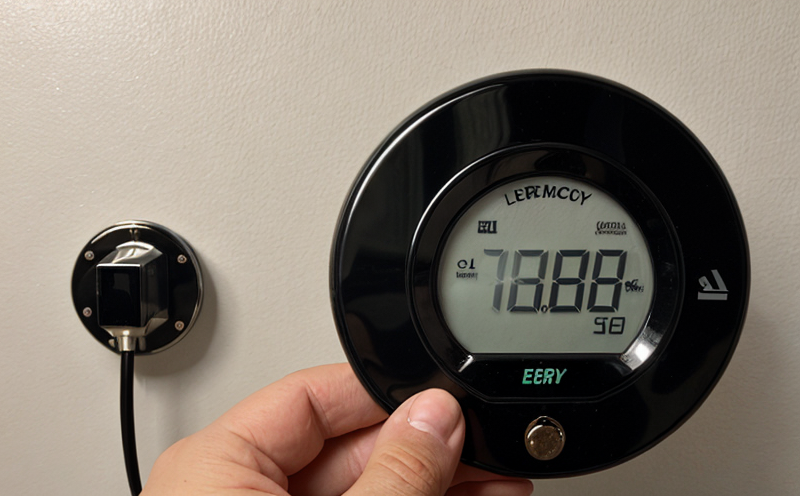ISO 18155 Energy Efficiency Testing for Heat Pumps
The International Standard ISO 18155 provides a framework for testing and evaluating the energy efficiency of heat pumps. This standard is essential in ensuring that heat pump products meet global sustainability goals set by regulatory bodies. The test protocol outlined in this international standard helps manufacturers demonstrate compliance with energy efficiency regulations, thereby enhancing their product’s marketability.
Heat pumps are complex devices combining refrigeration and heating technologies to transfer heat from one location to another efficiently. Testing for energy efficiency is crucial as it ensures that these units operate optimally under various conditions. ISO 18155 focuses on the measurement of input power, output power, and COP (Coefficient of Performance) which directly impact the overall efficiency of a heat pump system.
The testing process involves rigorous calibration of instruments to ensure accurate measurements. The specimen preparation includes ensuring that the heat pump is in optimal condition before testing begins. This often entails cleaning coils, checking refrigerant levels, and verifying fan speeds among other checks. Once prepared, the device undergoes a series of performance tests designed to simulate real-world operating conditions.
The test apparatus used typically consists of climate chambers capable of simulating different ambient temperatures ranging from extreme cold to hot climates. These chambers are equipped with sensors that monitor various parameters such as temperature, humidity, and pressure during testing. The instrumentation includes power meters, data loggers, and specialized software for analyzing results.
The acceptance criteria specified in ISO 18155 are stringent, ensuring only high-performing units pass the test. Compliance is determined based on specific performance metrics like input power consumption, output heating capacity, and COP values. Products failing to meet these standards must undergo corrective actions before retesting until they comply.
Compliance with ISO 18155 not only helps manufacturers meet regulatory requirements but also enhances brand reputation by showcasing commitment to environmental responsibility. This standard plays a pivotal role in driving innovation within the industry, pushing engineers towards developing more efficient solutions for heating and cooling needs globally.
Industry Applications
| Application Area | Description |
|---|---|
| Residential Heating Systems | Testing residential heat pumps ensures they meet energy efficiency standards for home heating systems. |
| Commercial HVAC Solutions | Evaluating large-scale commercial heating and cooling solutions using ISO 18155 helps in optimizing resource use. |
| Industrial Refrigeration Units | Applying the standard to industrial refrigeration equipment guarantees consistent performance across varied environments. |
| New Product Development | Developers can use ISO 18155 as a benchmark when designing new heat pump technologies. |
| Retrofit Installations | Evaluating existing installations ensures they continue to meet current efficiency standards post-upgrade. |
| Regulatory Compliance Audits | Auditors use ISO 18155 results to verify compliance with international regulations related to energy efficiency. |
| Sustainability Reporting | Incorporating testing outcomes into sustainability reports demonstrates commitment to green initiatives. |
| Research and Development | Scientists and engineers leverage ISO 18155 for advanced research on improving heat pump efficiency. |
Why Choose This Test
Selecting ISO 18155 energy efficiency testing for your heat pumps offers several advantages. Firstly, it ensures compliance with international standards that are recognized globally. Secondly, it provides valuable insights into the actual performance of your product under real-world conditions. Thirdly, this testing can help identify areas where improvements could be made to increase efficiency further.
Moreover, choosing ISO 18155 allows you to stay ahead in a competitive market by demonstrating your commitment to sustainability and innovation. By adhering to these stringent tests, companies position themselves well for future regulatory changes that may enhance energy efficiency requirements even more stringently than current standards.
The rigorous nature of the test also builds trust with customers who value environmental responsibility. When consumers see that a product has passed ISO 18155 testing, they know it meets high-quality benchmarks which contributes positively to brand image and customer satisfaction levels.
Lastly, participating in such tests fosters collaboration between different stakeholders involved in the supply chain including suppliers, manufacturers, distributors, etc., promoting best practices throughout every stage of production. This collaborative approach ensures that all parties contribute towards achieving common goals related to energy conservation and environmental protection.





